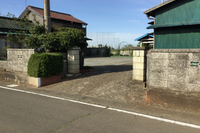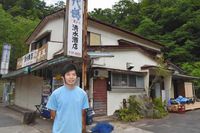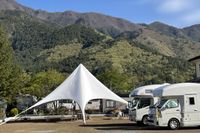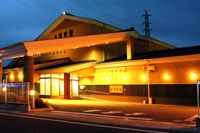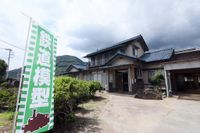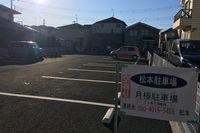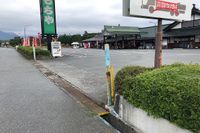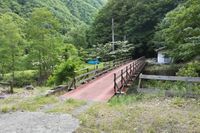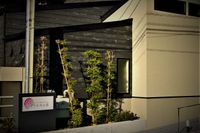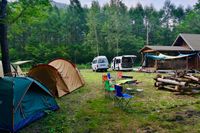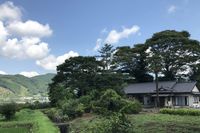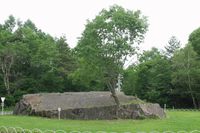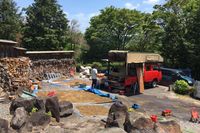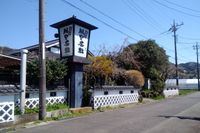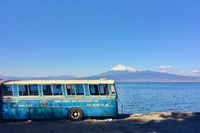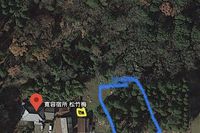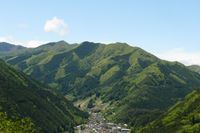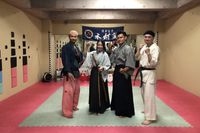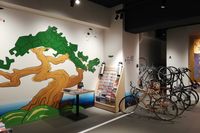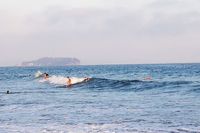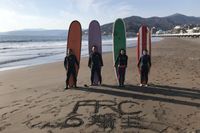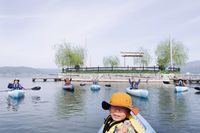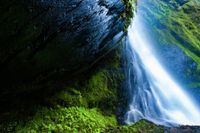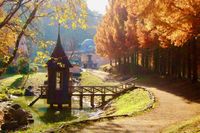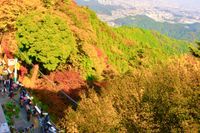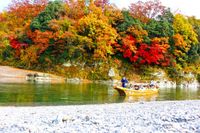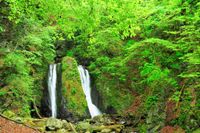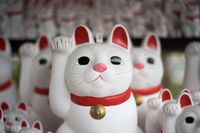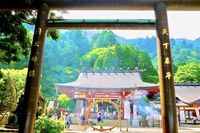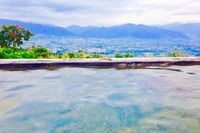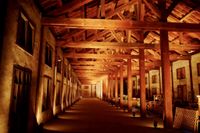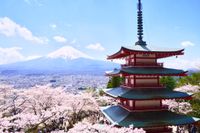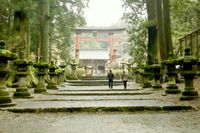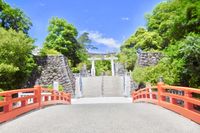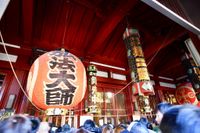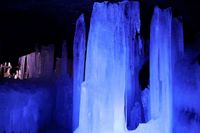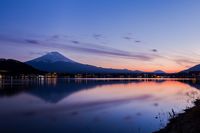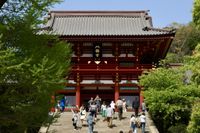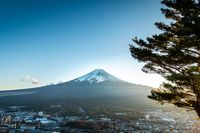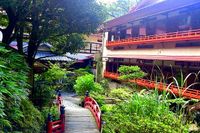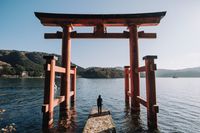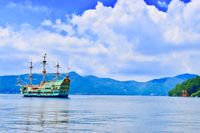3,500 JPY 〜/24 hours
3.00

5
1/8
2/8
3/8
4/8
5/8
6/8
7/8
8/8
Marsh climbing and natural pool
Saitama/Shimonaguri, Hanno-shi
3,500 JPY 〜
/1 person1,500 JPY 〜
/1 person (child)3.00 (0)
Description
We welcome you to our natural pool with its fresh water during the summer months! The water is far clearer and fresher than most artifical pools which have various chemicals in them.
Inquire about an experience tour or its booking requirements up-front
Contact a HostRequired time
90 minutes
※Please come on time
Host name

JOHAN,Kentaro
Couple from Naguri. Both of us have travelled all over the country and abroad and decided to live here with nature. Our dog Assu was an abandoned dog but is now part of our family!
The valley is relatively easy to access, but slowly becomes a gravel wonderland! You can cool off in the natural pool surrounded by beautiful nature!
Required Equipment
Towel,Watersuite,drink,change of clothes
Equipments provided by host
Changing room, Shower room
Eligibility
Fairly easy to access even for elementary school kids, but people, regardless of age, who are easily scared of rocks and have movement disabilities should reconsider. But it's possible to wait on the shore instead.
Supported Languages
English,Spanish
Note
Please take your trash with you.
Cancellation Deadline
17:00, 2 days before (Japanese time)
If you cancel your reservation after the Cancellation Deadline, cancellation fee will be applied. Cancellation rate can be checked here
In case of raining
Will cancel
Depending on weather condition, the host will decide whether the activity would be cancelled at least 4 hours before starting time. Cancellation notification will be presented in your My Page, and we will also inform you via emailAvailability status
Please click a date to see the availability of car
Sun | Mon | Tue | Wed | Thu | Fri | Sat |
|---|---|---|---|---|---|---|
30 | 1 | 2 | 3 | 4 | 5 | 6 |
7 | 8 | 9 | 10 | 11 | 12 | 13 |
14 | 15 | 16 | 17 | 18 | 19 | 20 |
21 | 22 | 23 | 24 | 25 | 26 | 27 |
28 | 29 | 30 | 31 | 1 | 2 | 3 |
Sun | Mon | Tue | Wed | Thu | Fri | Sat |
|---|---|---|---|---|---|---|
28 | 29 | 30 | 31 | 1 | 2 | 3 |
4 | 5 | 6 | 7 | 8 | 9 | 10 |
11 | 12 | 13 | 14 | 15 | 16 | 17 |
18 | 19 | 20 | 21 | 22 | 23 | 24 |
25 | 26 | 27 | 28 | 29 | 30 | 31 |
Meeting Place
sawarabino-yu station
Reviews
There is not yet review
3,500 JPY 〜
/1 person1,500 JPY 〜
/1 person (child)3.00 (0)
Find available dates
Sun | Mon | Tue | Wed | Thu | Fri | Sat |
|---|---|---|---|---|---|---|
30 | 1 | 2 | 3 | 4 | 5 | 6 |
7 | 8 | 9 | 10 | 11 | 12 | 13 |
14 | 15 | 16 | 17 | 18 | 19 | 20 |
21 | 22 | 23 | 24 | 25 | 26 | 27 |
28 | 29 | 30 | 31 | 1 | 2 | 3 |
Select time
Number of people
Login and proceed to checkoutNearby Car Night Spots
Kawaguchiko Yatai Village
¥2,500〜
/ per nightYamanashi Kawaguchi, Fujikawaguchiko Town, Minamitsuru District
4.5
(58)Railway Guest House Tetsunoya (hot spring available)
¥3,000〜
/ per nightYamanashi Shizume, Kasugai-cho, Fuefuki City
5.0
(15)A luxurious Niigami Pass camping car spot where you can occupy a 500 tsubo lot by yourself
¥150,000〜
/ per night群馬県 吾妻郡長野原町北軽井沢
5.0
(2)Izunokuni City Nirayama "Dining Daikan Yashiki"
¥4,000〜
/ per nightSHizuoka Nirayamayamaki, Izunokuni City
4.8
(8)Kanyo Inn (first, second and third-class rooms options)
¥20,000〜
/ per nightChiba Ken Norocho, Chiba Shi Wakaba Ku
3.0
(0)Nearby Activities
Cycling in Shinjuku! From the tourist information center [INBOUND LEAGUE] which is in a good location and takes 20 minutes to Shinjuku Gyoen, Meiji Jingu and Yoyogi Park.
¥2,000〜
/ per personTokyo Shinjuku, Shijuku-ku
3.0
(0)Organic Vegetable Picking at Microbe-NaturalFarmers
¥2,500〜
/ per personKanagawa Ken Fukuda, Yamato Shi
3.0
(0)FRC Surf School (Beginners Welcome!)
¥5,400〜
/ per personKanagawa Ken Kugenuma Kaigan, Fujisawa Shi
3.0
(0)Ranking Stations
(Bonfire BBQ) Chita Mihama Noma Beach Station
¥3,500〜
/ per nightAichi Noma, Mihamacho, Chita County
4.7
(42)Vanlife BASE | 45 min. from Narita Airport / Perfect for campervan travel/A seaside town rich in nature/Japanese countryside town/welcome traveler
¥7,000〜
/ per nightChiba Koseki, Kujukuri-machi, Sambu-gun
5.0
(61)Nearby Drive Spots
Mitsugama Falls
This area contains three impressive waterfalls in Okutama, with a height of around 12.5m. It is truly an area to get away from the hustle and bustle of the city, with just the wind, water and the chirping of the birds. There are larger waterfalls in the upstream area, and the area is ideal of hiking.
Tove Jansson Akebono Children's Forest Park
This is a park that is a recreation of Moomin's world (a famous cartoon originating from Finland), in Hanno, Saitama. Within the park, there is a "Moomin Mansion" where there is an exhibition dedicated to the author, Tove Jansson, as well as historical items relating to Moomin itself.
Mount Takao
This is a 599m high holy mountain of the Shugendo religion (a fusion religion that originated in Heian Japan). The area was open to the public from 744 AD where Takao-san Yakuoin (a buddhist temple) was built. It is known as Tokyo's top autumn leaf spot, and has received three stars from the Michelin tourism guide. The area is also famous as a habit for the Japanese flying squirrel.
Nagatoro Gorge
This is a famous valley in the upper part of the 6km Arakawa river, in Chichibu. The area is famous for its rock formations and visitors can enjoy canoeing, rafting and campings. The area is famous for its fresh water shaved ice and miso pickled pork. In autumn, one can enjoy the autumn leaves as well as apple picking.
Kosuge Odaki Falls
Follow a 15-minute river trail deep into a thicket of shioji trees until it reveals a majestic rock, where the rapid of Tama River breaks in half and forms an absolutely breathtaking twin waterfall display. Kosuge Odaki Falls truly is a sight to behold and a favorite of many photographers.
Gotokuji Temple
This is a Soto sect temple built in 1480 by Kira Masatada. It is said to be the birth place of the "Maneki-Neko" (waving cat) where there is a legend that Ii Naosuke built a temple here when invited by a cat to escape from a great thunderstorm. The temple contains thousands of Maneki-Neko, and is the only temple where the cats are revered.
Oyama Afuri Shrine
This shrine was built in 200BC. It houses the Gods Oyamatsumino-okami (Mountain God)Takaokamino-kami (Water God)Oikazuchino-kami (Thunder God) . Historically the mountain was considered a place of worship, and was visited by all types, from warriors to common people. Minamoto Yoritomo offered a sword to defeat Taira clan, and it is said that from this the culture of "Osamedachi" (sword offering) was born, and its influence can even be seen in Japanese Rakugo comedy and Ukiyo-e art.
Hottarakashi Onsen
This is an Onsen in Yamanashi prefecture. From the bathing area, you can see the Kofu basin below, and Mount Fuji is visible on a clear day. The onsen became well known as a place that opened early in the morning and ideal for viewing the sunrise. The name comes from the fact that there are no special advertisements or services provided, but is a place simply to have fun.
Tomioka Silk Mill
This is a silk factory that opened in 1872, and is registered as a World Heritage Site. When the country opened its borders during the Edo era(1603-1858), it was used as one of the places of production of silk which was exported to countries, supporting the Japanese economy. The place was opened with the efforts of Okuma Shigenobu, Ito Hirobumi and Shibusawa Eiichi, with operations ceasing 116 years later in 1987. The reeling yarns and storage areas used when in operation are still present and available to view by visitors.
Arakura Fuji Sengen Jinja Shrine
This is a temple built in 705 AD, housing the Gods known as Konohana-Sakuyahime, Ninigi no Mikoto and Oyamatsumino-okami. During the Sengoku Era(1467-1600), the warrior Takeda Nobutora visited here, praying for war victory. The area is especially famous for what has been oft known as the "best view in Mount Fuji" with the 5 storied pagoda, cherry blossoms and Mount Fuji in the background, to produce some truly postcard-worthy camera shots.
Kitaguchi Hongu Fuji Sengen Jinja Shrine
A shrine built in the garden of Kino Toyohiro in 788 AD, this is a World Heritage Site along with Mount Fuji. The main Gods enshrined in the temple are Konohana-Sakuyahime, Ninigi no Mikoto and Oyamatsumino-okami. It is situated at the foot of the climbing path of Mount Fuji known as Yoshida-guchi, and many mountain climbers who worshipped Mount Fuji visited here. In front of the hall of worshippers there are two 1000 year old holy trees known as the "Fuji-Taro Cedar" and the "Fuji Cypress tree of married couples".
Takeda Shrine
This is a shrine that was built by Takeda Shrine Association in 1919, where the warrior Takeda Shingen is deified as a shrine God. It is settled on the grounds of where the lodging house known as "Tutujigasaki Yakata", built by Takeda Nobutora. After the Russo-Japanese war in 1904, peopled wished for warriors and soldiers to be enshrined in the temple, which is why Takeda Shingen, a great warrior during the Sengoku era(1467-1600), was enshrined here, and is revered as the "Victorious God" even today.
Kawasaki Daishi Heikenji Temple
This is a temple, which was built in 1128 by the Hirama Kanenori. The temple was a mainstay for the Shingon sect and founded by Kukai, a famous Japanese poet. During a historical pilgrimage known as the 88 places of Kanto, the temple was designated as a special sacred site, and the Tokugawa family visited here during the Edo period(1603-1868). Even now, a great many people visit this shrine for the "Hatsumoude" (new years temple visit)
Narusawa Ice Cave
This is a 156 meter cave near Aokigahara cost. The area was formed by an eruption of Mount Fuji in 864 AD. At an underground depth of 21 meters, one can find the "tree pond" where there are beautiful ice pillars and stunning rock formations. This area is often visited along with the Fugaku Fuketsu Wind Cave which is situated nearby.
Lake Shoji
This is one of the five lakes of Mount Fuji, and is included as a world heritage site along with Mt Fuji itself. The area is popular for various famous photo spots of Mount Fuji, such as the "Double Mount Fuji" where it can be captured with its mirror image reflected in the water, as well as where Mount Fuji appears to overlap with the smaller Mount Muroyama.
Tsurugaoka Hachimangu
This is a temple that was established in 1063 by Minamoto Yoshitsune. It houses the Yawata God known as Emperor Ojin HimegamiEmpress Jingu. The temple was central to the Kamakura Bakufu, which was started by Minamoto Yoritomo, and was known as guardian deity of Minamoto clan, a Kamakura Samurai. Under the reconstruction of the Hojo clan and Tokugawa families, the temple remains the heart of Kamakura and a place of respite and hope for many.
Mount Fuji
Japan's tallest mountain at 3,776 meters and a registered World Heritage Site. Mount Fuji is a splendid sight and one of the most well known views of Japan. Mount Fuji has historically been known as an object of worship and holy site. The mountain is open to climbers between July and August.
Hakone Onsen
This is an old spring Bath at the base of Hakone Volcano. It is a treasured area that has 20 hot spring baths, known as the Hakone Ni-ju-yu. The area has 1,300 years of history, and is famous due to Toyotomi Hideyoshi going to this area. During the Edo era(1603-1868), the area prospered as a hot spring spot in the Tokaido area, and was also revered by the house of the Tokugawa family.
Hakone Shirne
This is a shrine built in 757 by Mangan. It is said to house the God named "Ninigi", as well as the Gods "Konohana-Sakuyahime" and "Hikoho Hodemi no Mikoto". Mangan is also worshipped as a protector God after having slayed the nine headed dragon that ravished Lake Ashinoko. One of the most striking sights is the "Heiwa no Torii(The Gate of Peace)", built in 1952, that appear to float in the Lake Ashinoko.
Lake Ashinoko
This is a lake situated in Hakone. The Hakone Shrine can be found here as well as resort areas and other points of interest. Mount Fuji can also be viewed from here. Pleasure boats themed on pirate ships are also becoming popular in the area, as well as it being the end goal in the Hakone Ekiden annual marathon, and the start of the route back.









